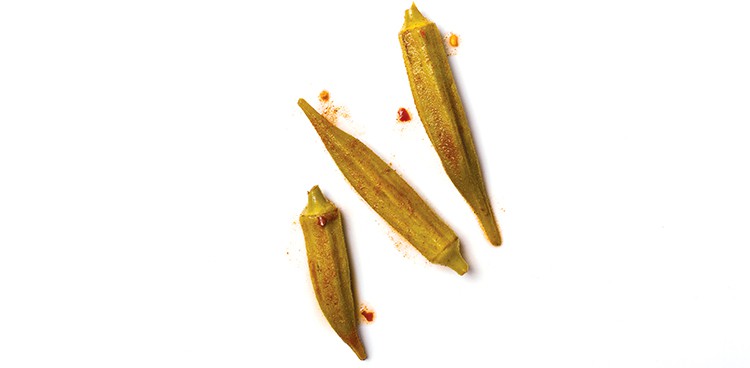
Pickles and cheese share a basic origin: the need to preserve the harvest. Before refrigeration, fermented milk preserved essential calories, while fermented produce made vitamins available year-round. No wonder, then, that these stinging, stinking, succulent subsistence foods pair quite naturally.
Today, few of us fight scurvy with a kosher dill, but interest in pickling is on the upswing. New pickle makers are preserving recipes from their grandparents as well as developing innovative ways to combine vegetables and acid. Pickles’ vivid colors and intense flavors, as well as their unique position—halfway between cooked and raw, dressed and nude—has made them darlings of chef’s plates, cookbooks, and grocery stores.
There are two broad varieties among the brined.
So-called salt- or lacto-fermented pickles are made through direct fermentation: Vegetables are immersed in brine, where saltloving lactic acid bacteria convert sugars in the vegetables to acid and alcohol, preserving them from the inside out. The resulting pickles tend to have a mellow flavor—though not always. Often their beneficial bacterial cultures remain active.
Vinegar pickles, on the other hand, make use of secondhand fermentation. Wine or another alcohol is fermented into acetic acid, which is poured onto the vegetables, creating an inhospitable environment for bacteria. These pickles tend to have a deeper vinegar sting, but can also fall to the sweet side when sugar is added to the brine. They lack active bacterial cultures.
There are many different approaches for preserving the same vegetable, particularly beyond cucumber pickles. Sweetness and sourness vary greatly between brands and recipes, so be willing to experiment.
Traditional-ish
The “ploughman’s lunch,” a meal of cheese, bread, and pickle, was an invention of the postwar British government, a successful attempt to get folks to eat more cheese after the end of rationing. The combination is now a classic pairing, as savory cheddar served with a sweet-and-salty pickle is extremely satisfying.
Widmer’s Cheese Cellars 1-Year Aged Cheddar + McClure’s Sweet & Spicy Pickles
Beecher’s Handmade Cheese Flagship Reserve + Rick’s Picks Sweet & Sassy Mix
Shelburne Farms Farmhouse 1-Year Aged Cheddar + Happy Girl Kitchen Garden Bouquet
Hipster
The pickle revival has drawn innovators to the art. Rick’s Picks Smokra (pickled okra in the featured image at the top of this post) is spiked with smoked paprika, whose complexity synergizes beautifully with a mild and creamy blue cheese. The combination of Scrumptious Pantry’s pickled beets and an aged crottin takes the trendy beet-goat cheese combination and swaps in sophisticated ingredients to achieve new levels of complexity.
Käserei Champignon Cambozola + Rick’s Picks Smokra
Vermont Creamery Bijou + Scrumptious Pantry Heirloom Pickled Red Beets
Multicultural
Call them yin-yang pairings: Hawaiian-Japanese takuan (preserved daikon radishes with a sulfur bite) combine with fresh, milky chèvre to cut the funk, and mild-yet-fragrant Limburger is topped with slices of peppery, horseradish-y kabees el lift (pink-tinted Lebanese turnip) to balance the cheese’s heaviness.
Surfing Goat Dairy Udderly Delicious Chèvre + Kula Maui Takuan
Käserei Champignon Halali Limburger + Lebanese-style Turnip Pickles
Culinary
Pickles have always been homecooking specialties. Here are two DIY suggestions from folks who know: The Art of Fermentation (Chelsea Green Publishing, 2012) author Sandor Ellix Katz suggests serving homemade sauerkraut on a tortilla, along with melted Jack cheese, for a variation on Salvadoran cheese-filled pupusas and spicy-sour curtido relish. Chef Cortney Burns of San Francisco’s Bar Tartine pairs a mixed-milk triple crème with pickled butternut squash puree, which, she says, “has a way of pulling the sweetness of the milk to the forefront.”
Vella Cheese Co. Mezzo Secco Monterey Jack + Homemade Sauerkraut
Nettle Meadow Farm and Artisan Cheese Kunik + Fermented Butternut Squash
HOW TO TASTE
Pickle brine will overwhelm any cheese, and wet wedges are no fun, so let your pickles drain for a minute or two before tasting with cheese. Don’t be afraid to take a slice or a dab (rather than an entire pickle) to eat with cheese, in order to keep all of the flavors in balance.





